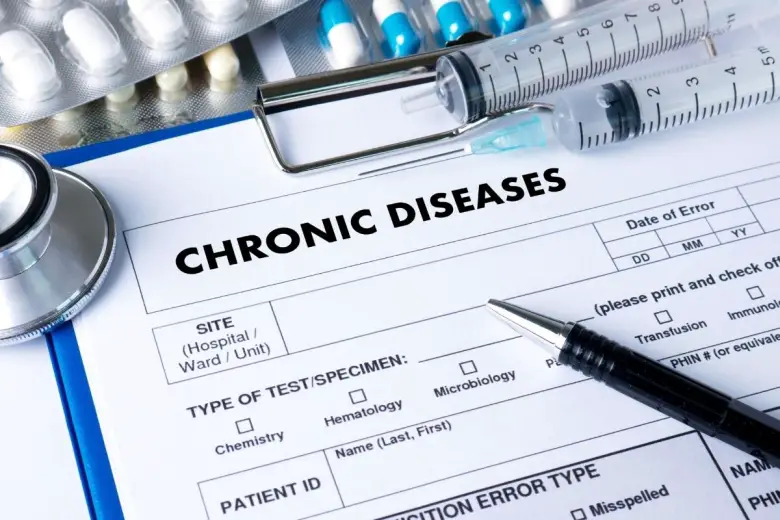What is a Major Acute Illness?
A major acute illness is a medical condition that is serious, severe, and occurs suddenly. It has to have all three of those characteristics.
If an illness comes on quickly, it’s acute but it may not be serious. For example, nausea may come on quickly but after the doctor does his examination, he may find that it is not related to a serious disease.
When someone has a heart attack, it’s always an acute medical condition. However, it may or may not be serious. It’s serious if it threatens the person’s life. All heart attacks don’t cause sudden death although they all should be checked out to see whether or not they fall in the category of serious conditions.
A heart attack that is severe is one that cuts off blood supply to the entire heart and brain, and the damage from the loss of oxygen causes serious damage in the body. This would be considered a serious, severe, illness that occurs suddenly – and thus is a major acute illness.
A major acute illness may be one that includes trauma. It may include conditions that include a fever, stopped breathing, or a sports injury/car accident.
Acute vs Chronic – What’s the Difference?
In medical terminology, acute illnesses are ones that cause symptoms suddenly. This may be an infection of any type, severe chest pain, trouble breathing, fever, nausea, vomiting, excruciating pain, or headache. Acute illnesses are ones that are resolved within a short period of time.
Acute illnesses are ones that need a trip to the emergency room to determine what is wrong. In some cases, the cause is unknown, and the condition may continue for a longer period of time until something actually shows up on the medical tests that helps the doctors determine a diagnosis.
Mental illness may also be considered an acute illness. For example, if someone has a chronic illness diagnosis of depression and then one day wakes up and is suddenly worse and suicidal, the chronic illness has become an acute one. Acute illnesses usually threaten a person’s life. You have to breathe to live and if you can’t get enough air in your lungs, it’s always an acute illness. Excruciating pain can cause someone to go into a coma and is also considered an acute illness.
An acute illness can come on so fast that it leads to death.
Some acute illnesses will develop into serious health conditions if they are not attended to. Thus, it’s always important to go to the emergency room to get a diagnosis.
A chronic illness is one that continues over time. The time frame for chronic illnesses usually extends to several weeks, months, or years.
Acute Illness Examples
Some examples of acute illness are:
| heart attack | sudden pain either in the abdomen or any other part of the body | sudden collapse |
| asthma attack | sudden loss of the ability to walk | sudden and sharp headache |
| anxiety attack | sudden loss of the ability to talk | sudden back pain that is sharp |
| an epileptic seizure | sudden loss of the ability to hold one’s urine or feces | sudden inability to walk on one or both legs |
| a seizure of other kinds | sudden fever | appendicitis |
| physical attack where the person is beat up | high fever | pancreatitis |
| psychological attack from within – a suicidal thought that the person has acted on or will act on | sudden vomiting, especially if it won’t stop | colitis episode |
| inability to breathe | sudden hiccuping | sudden earache |
| acute bronchitis | sudden diarrhea | organ failure |
| acute pneumonia | sudden spurting of blood from any part of the body |
Understand that an Illness May Be Both Acute and Chronic
There can be some back and forth between the categories of acute and chronic illnesses. For example, when a heart attack happens suddenly, it’s acute. However, the damage left behind from the heart attack may make it a chronic disease, and then it is called heart disease.
Another example is an asthma attack, which is sudden but the condition of asthma still remains for years to come and it is a chronic illness called asthma.
One additional example is that of a broken bone. Sometimes an elderly person may fall and break a hip. The broken hip is an acute condition but the underlying condition – low bone density or osteopenia – is a chronic illness.
Diabetes is a chronic condition that lasts for years but a diabetic coma is an acute situation that must be attended to right away. Without medical attention, the patient may die. Diabetes may have other acute illnesses as well, such as an infection that suddenly becomes gangrene or suddenly shows a red streak moving up towards other parts of the body. Sometimes diabetics will suddenly lose their vision, which is another acute illness. They may also go into low blood sugar and pass out or go into a coma, another acute illness.
What are the Most Common Acute Diseases?
The most common acute diseases are heart attack, stroke, diabetes, and obesity. It’s important to know that if you are the caregiver for someone with medical conditions, you must be attentive to what is happening to them each day you are in their presence.
Here’s a list of possible questions to consider:
- Is this person dehydrated?
- Is this person showing signs of losing mental functions suddenly?
- Is this person having sudden pain of any type?
- Is this person bleeding?
- Is this person breathing in a labored manner?
- Is this person having any type of mental / psychological breakdown?
- Is there a fever?
- Is there a sudden change in body temperature?
- Did the person’s skin color change?
If you are alert to these sudden changes, you can be the person that saves the person from dying in the event that an acute condition arises. Getting the person to the doctor for medical help in the nick of time is crucial to survival.
What are the Most Common Chronic Diseases?
The most common chronic conditions are ones that affect the heart, brain, pancreas, weight, and joints. In fact, according to the Centers for Disease Control, chronic diseases eat up 86% of all health care costs. These chronic diseases include:
| heart disease | chronic obstructive pulmonary disease (COPD) |
| stroke | asthma |
| cancer | dementia, including Alzheimer’s disease |
| diabetes | eating disorders |
| arthritis | cystic fibrosis |
| obesity | gum disease |
Let’s distinguish between an acute condition and a chronic condition because sometimes conditions mask as one or the other. For example, it may seem like someone suddenly exhibits their skin turning yellow/tan/with a greenish tint. An untrained eye may think, “Oh, Sally looks better. She’s not so pasty looking anymore. Maybe she got some sunshine.”
However, the reality about Sally may be that she has had a gall bladder attack, possibly with stones, and the pigment from the gall bladder which is a greenish color has now invaded the surrounding tissues and gotten into the bloodstream. The pigments have deposited into her skin and she looks greenish yellow, not tan. She needs medical tests to determine what is really happening in her body.
This was a situation I faced recently with one of my patients. Her friends were telling her she looked better although some picked up on the greenish jaundiced color of her skin. When we ran medical tests, her bilirubin levels were over 20 times normal, indicating a major crisis occurring in her gall bladder. Further tests will tell us really what is at the root cause.
Below is a table of questions to ask yourself if you are a caregiver and what a positive answer could mean.
| Question to Ask | Positive Could Mean This Acute Illness | Positive Could Mean This Chronic Illness |
| Dehydrated? | Diabetic emergency Kidney stone | Not drinking enough water Kidney disease Diabetes Poor nutrition Vomiting and diarrhea Sweating Working out/exercising Hot climate |
| Skin color change | Lack of blood flow to an essential organ such as heart, brain, liver, gall bladder Heart attack Pancreatitis Stroke Gall Bladder Stone | Anemia Liver problems Malnutrition Pregnancy Sun exposure Addison’s disease Autoimmune disease |
| Loss of mental thinking ability? | Stroke Diabetic Coma Heart Attack Seizure Mental breakdown | Not enough water Poor nutrition Lack of eating Metabolic disease Low blood sugar levels Not enough protein |
| Sudden pain? | Heart attack (pain may be in heart / chest region or arms, back, neck, jaw, or stomach) Appendicitis Food poisoning Aortic aneurysm Ruptured spleen Gallstones blocking ducts Bowel blockage Cancer GERD attack Stomach virus Electromagnetic field flux Lactose intolerance Accident | Acid reflux Food sensitivities or food allergies Gas in intestines Celiac disease Endometriosis Injuries in the past that haven’t healed |
| Bleeding? | Fibroids in uterus Colon polyps Endometriosis Infection Contraception (IUD) Infection of the cervix/cancer of the cervix Sudden bleeding from the pores can be from electromagnetic field fluxes | Vitamin C deficiency (causes nosebleeds) Sickle cell anemia Pregnancy |
| Difficulty breathing? | Heart attack Blood clot in lungs (pulmonary embolism) Problem with the aorta Asthma attack COPD Electromagnetic field fluxes | COPD Lung disorders Heart disorders Asthma Anemia Anxiety Allergies Hookworm Myasthenia gravis Cancer |
| Fever? | Infection Heat exhaustion Inflammatory conditions such as rheumatoid arthritis Viral infections Mold infections | Thyroid irregularities Menopause Tick bite |
| Sudden change in body temperature | Thyroid storm Fever Heat exhaustion Rheumatoid arthritis Electromagnetic field fluxes | Menopause Iron deficiency anemia Anxiety Telling a lie Eating hot peppers |
Summary
Illnesses can be acute or chronic. They may start out as an acute disease but in reality they were a chronic disease that was not detected previously. However, if there was no underlying medical condition, it could be the result of an electromagnetic field disruption that is affecting your body’s electromagnetic field.
Your first step if you are caregiving for someone who is having an acute illness is to get them to a medical doctor, emergency room, or hospital where they will be stabilized. Your goal is for them to live through the acute event. Your second step is to see if there was an underlying electromagnetic field issue that contributed to the acute illness. If one is found and the steps to remedy it are taken, it can save the person from taking unnecessary medications for the rest of their life.




